European Green Deal and the Fit for 55 Package explained for EV drivers
Electric mobility is no longer a futuristic concept or a hypothetical scenario. There are now over 10 million electric vehicles (EVs) on the roads worldwide, and this number is expected to surpass 100 million within the current decade.
Electric cars are not just changing how we move from point A to B—they are playing a critical role in the fight against climate change and are a key driver behind governments’ efforts to meet long-term environmental goals.
Europe aims to be the first climate-neutral continent by 2050, a goal formalized in 2019 through the European Green Deal. That same year, our research revealed that while 60% of people felt reducing CO2 emissions was personally important, only 10% were familiar with the European Green Deal.
Since then, there have been significant developments, but with so much happening at once, it can be hard to keep up. This article will provide an overview of the current status of the EU Green Deal, the Fit for 55 Package, and what these new policies mean for EV drivers.
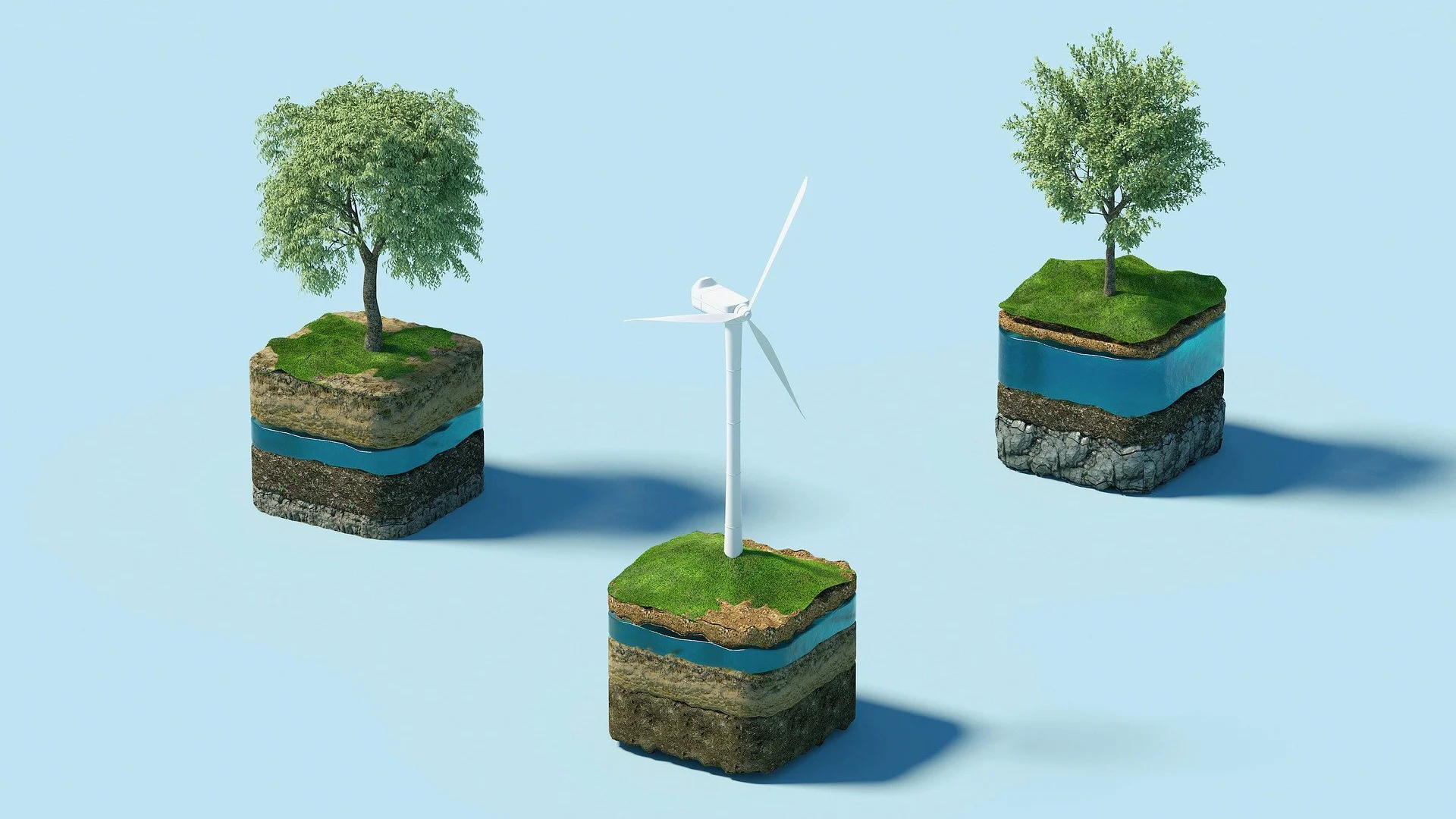
Table of contents
- Climate change
- Transport emissions
- What is the European green deal?
- What is Fit for 55?
- The Fit for 55 PackageÂ
- The Fit for 55 Package and electric mobility Â
- The legislative processÂ
- What are the implications of the Fit for 55 Package for EV drivers?
Climate change
Before diving into complex legislation, let's take a step back and understand why tackling climate change is so crucial. Greenhouse gases—like CO2—are accumulating in the atmosphere due to activities such as burning fossil fuels, which leads to global warming and environmental disruption. Reducing these emissions quickly is essential to prevent dangerous climate impacts.
Transport emissions
According to the IEA, transportation accounts for 24% of direct CO2 emissions from fuel combustion, and this share has been rising steadily since 2000. However, many countries are already taking action, like implementing zero-emission vehicle mandates and stricter emissions standards.
In 2019, transport emissions only increased by 0.5%, partly thanks to the shift toward electric vehicles.
What is the European green deal?
The European Green Deal, announced in 2019, was a major milestone. It was even called “Europe’s man on the moon moment†by President Ursula von der Leyen. With this plan, all 27 EU member states recognized the urgent need to address climate change and set a binding goal of achieving climate neutrality by 2050.
Following the announcement, we wrote an in-depth article about how the Green Deal supports EV adoption and transport transformation.
55 percent net emission reduction in 2030
After an impact assessment, it became clear that under current laws, the EU would only achieve a 60% net emission reduction by 2050. To reach full climate neutrality, the EU raised its target to a 55% reduction by 2030. In response, the Commission launched the "Fit for 55 Package" in July 2021.
What is Fit for 55?
Think of the EU Green Deal as the overall strategy for achieving climate neutrality by 2050. But to make that possible, structural changes are needed. That's where the Fit for 55 Package comes in—it's a set of policies aimed at helping Europe reduce emissions by at least 55% by 2030.
“We have to shift the whole economy into high gear. Fit for 55 will align our laws with our ambitions.†– EU Green Deal chief, Frans Timmermans.
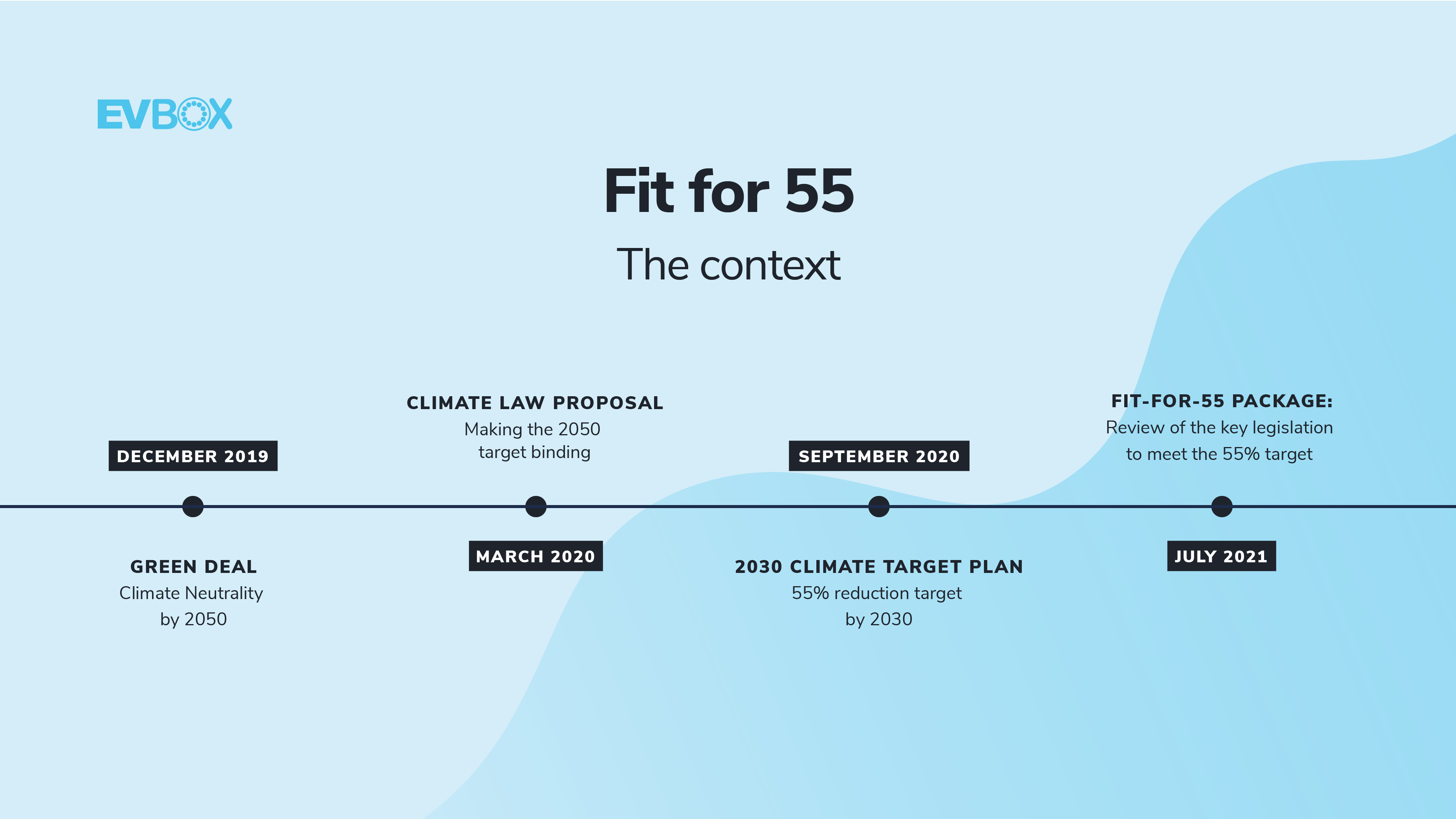
The Fit for 55 PackageÂ
The Fit for 55 Package will be published in two parts. The first part, including 13 legislative proposals, was released in July 2021, and the second part is scheduled for December 14, 2021.
Part 1 of the Fit for 55 Package (July 2021)
Revisions to and amendments of existing EU laws
Revisions
- EU emission trading scheme (EU ETS)
- Regulation on land use, land-use change, and forestry (LULUCF)
- Effort sharing regulation (ESR)
- Energy taxation directive
- Alternative fuels infrastructure directive (AFID)
Amendments
- Renewable energy directive (RED)
- Energy efficiency directive (EED)
- Regulation setting CO2 emission standards for cars and vans
New legislative proposals
- New EU forest strategy
- A carbon border adjustment mechanism (CBAM)
- A Climate Action Social Facility
- ReFuelEU Aviation – on sustainable aviation fuels
- FuelEU Maritime – on greening Europe’s maritime space
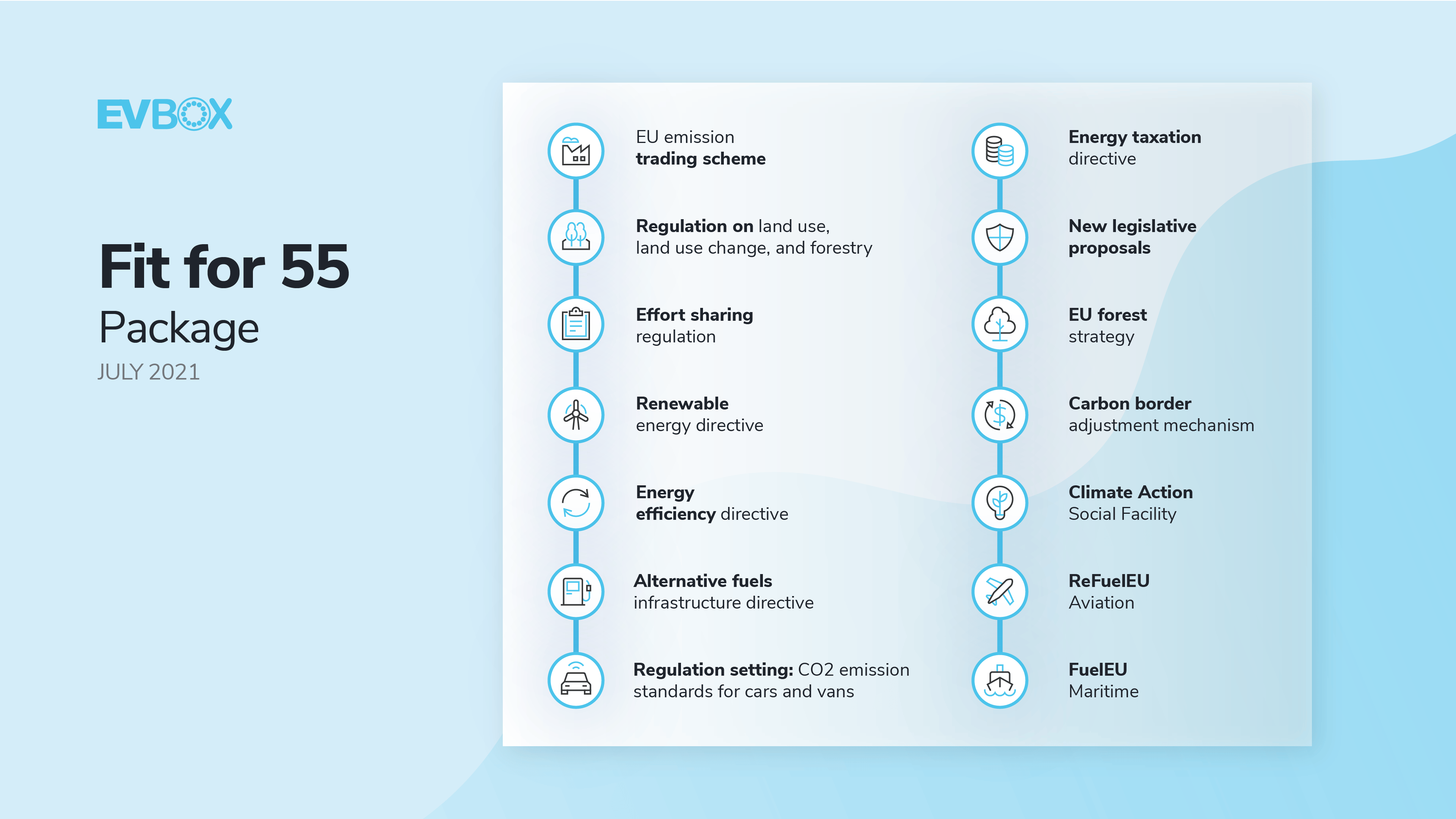
The Fit for 55 Package and electric mobility Â
The Fit for 55 Package proposes ambitious plans to be implemented by 2030 across all sectors. While it goes beyond electric mobility, this article focuses on how it affects EV drivers.
Reducing emissions from road transport
Road transport is the largest source of transport emissions. In 2019, it accounted for 72% of all domestic and international transport GHG emissions. The Fit for 55 Package aims to:
- Accelerate charging infrastructure rollout;
- Make electric driving easier and more accessible;
- Establish a phase-out date for fossil fuels.
Three specific pieces of legislation will impact transport decarbonization.
Charging infrastructure
The Alternative Fuels Infrastructure Regulation revises the 2014 Alternative Fuels Infrastructure Directive, requiring EU countries to develop national policy frameworks for public refueling and recharging points. The revision includes binding targets and improved user-friendliness for recharging stations.
Renewable electricity
The Renewable Energy Directive aims to increase the share of renewables in final energy consumption to 40% by 2030. It also introduces credit mechanisms for renewable electricity in transport and sets smart charging and V2G requirements for private EV stations.
CO2 emission standards for new vehicles
The CO2 emission performance standards for cars and vans Regulation sets a full phase-out of internal combustion engines by 2035, with 100% greenhouse gas reduction targets for new cars and vans sold after that date. The interim target is a -55% reduction for cars and -50% for vans by 2030.
These proposals are not yet law—they must go through the EU legislative process.
The legislative processÂ
Before becoming law, the Fit for 55 Package will go through the EU legislative process. The first part is currently under review by the European Parliament and Council of the EU. Once they agree, the proposal becomes law. The same process applies to the second part, expected in December 2021.
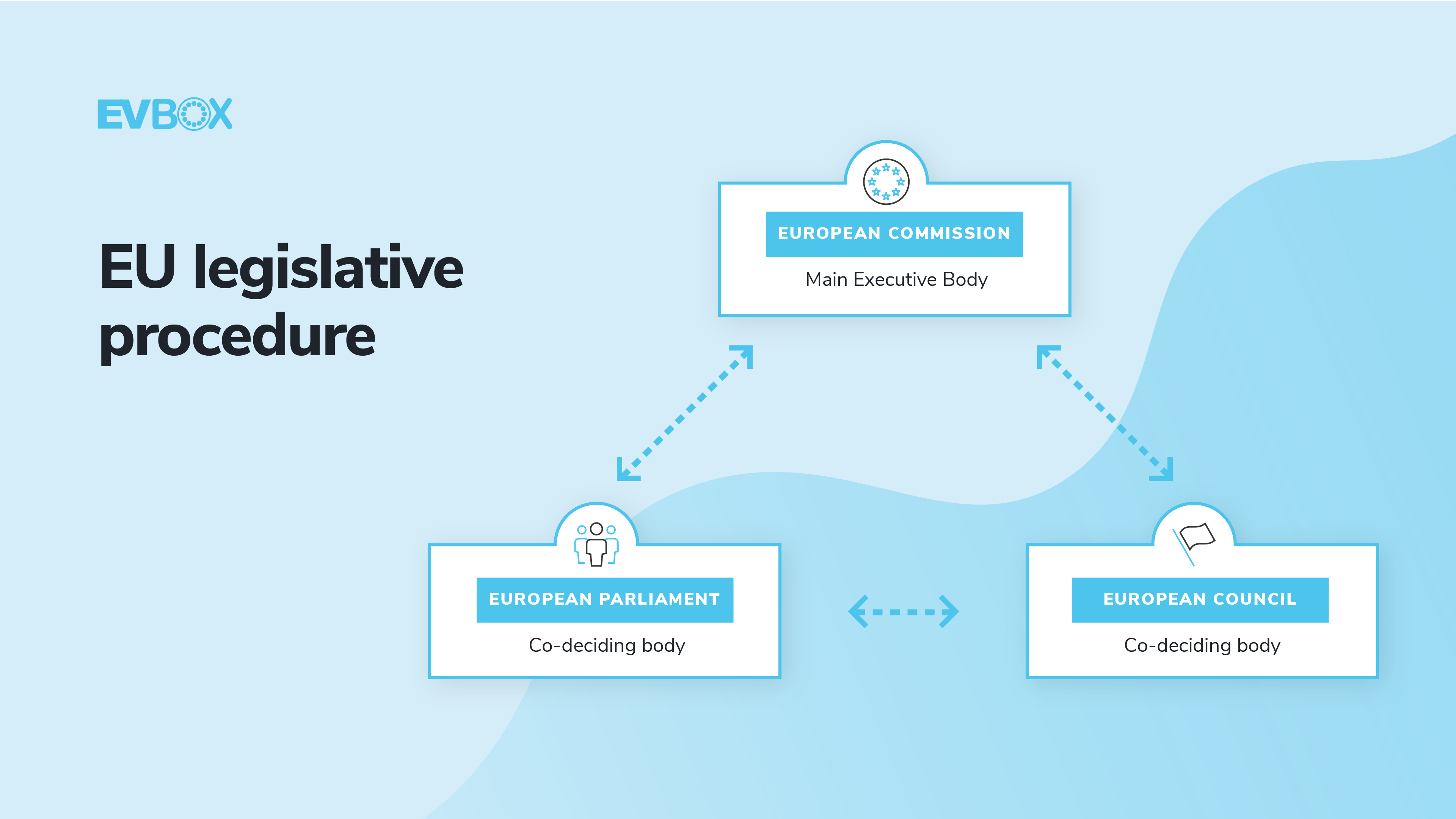 The same procedure will follow for the second part of the proposal, which will be presented by the European Commission on December 14th.
The same procedure will follow for the second part of the proposal, which will be presented by the European Commission on December 14th.
When will the Fit for 55 Package be fully implemented?
We expect all Fit for 55 Package proposals to become law by the end of 2022. We've created a tentative timeline to visualize the legislative process.
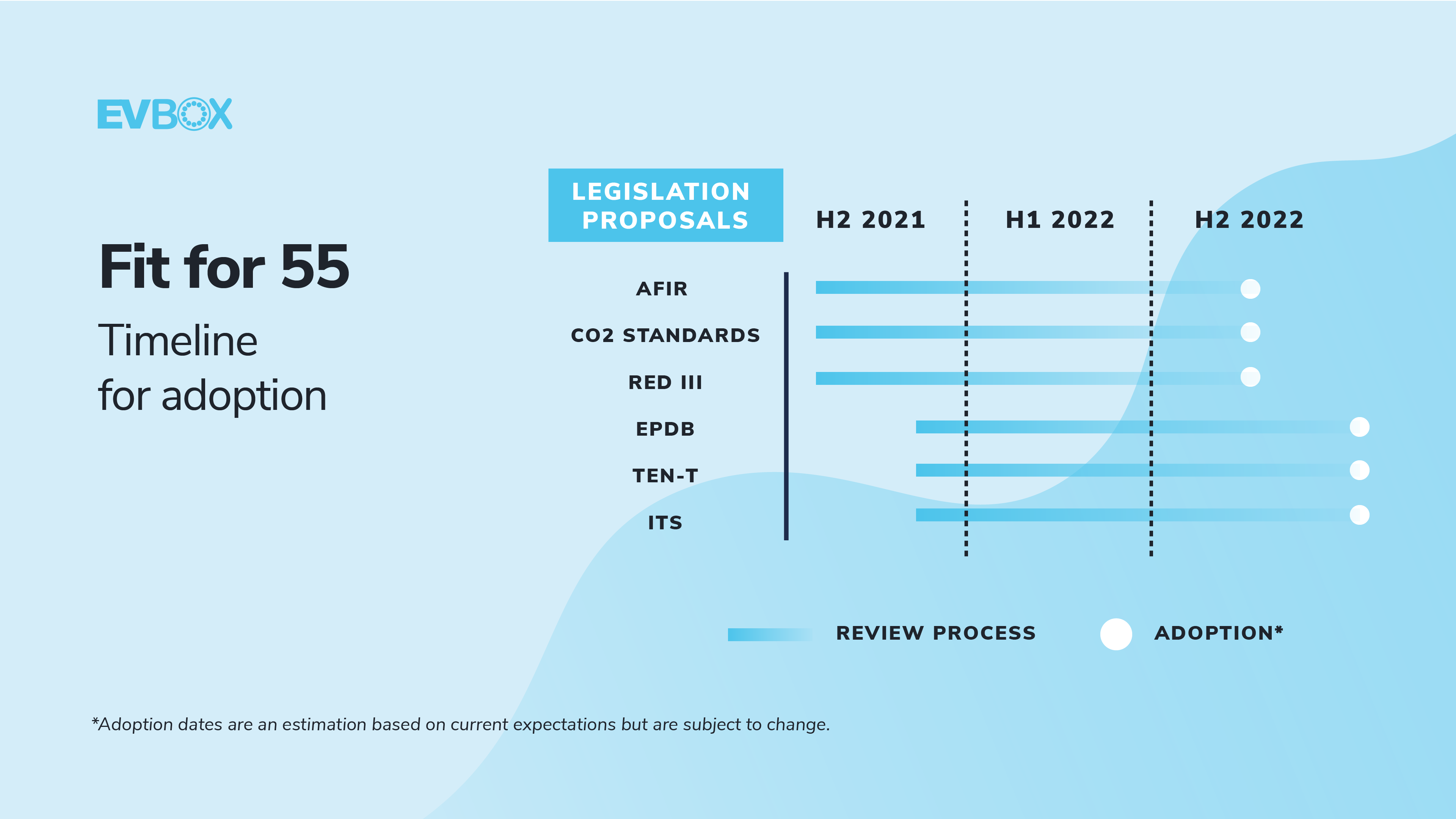
What are the implications of the Fit for 55 Package for EV drivers?
Now that we’ve covered the big picture, let’s look at what this means for you.
Greater motivation to go electric
The clear phase-out date for ICE cars will give clarity to industry and consumers, ensuring the EU stays ahead in the global EV market. This will encourage automakers to accelerate electrification, giving drivers more reasons to switch to electric vehicles. Â
Legal framework for recharging infrastructure
The revised Alternative Fuels Directive becomes a Regulation, meaning common rules and technical specifications across the EU. This ensures a consistent and better experience for EV drivers across the continent.
Increased and better quality charging infrastructure
The package sets minimum targets for public fast-charging power per BEV and requires Member States to create National Policy Frameworks for charging networks. This guarantees that drivers will have access to reliable and sufficient charging infrastructure.
A step forward in truck electrification
The package sets targets for heavy-duty vehicles, including recharging infrastructure every 60km along highways by 2025. This supports the transition to e-trucking and makes long-haul travel more feasible for electric trucks.
Easier international travel
By 2025, EV drivers can expect recharging points installed every 60km, even when crossing borders. This ensures seamless cross-border connectivity and better circulation of electric vehicles throughout the Union.Â
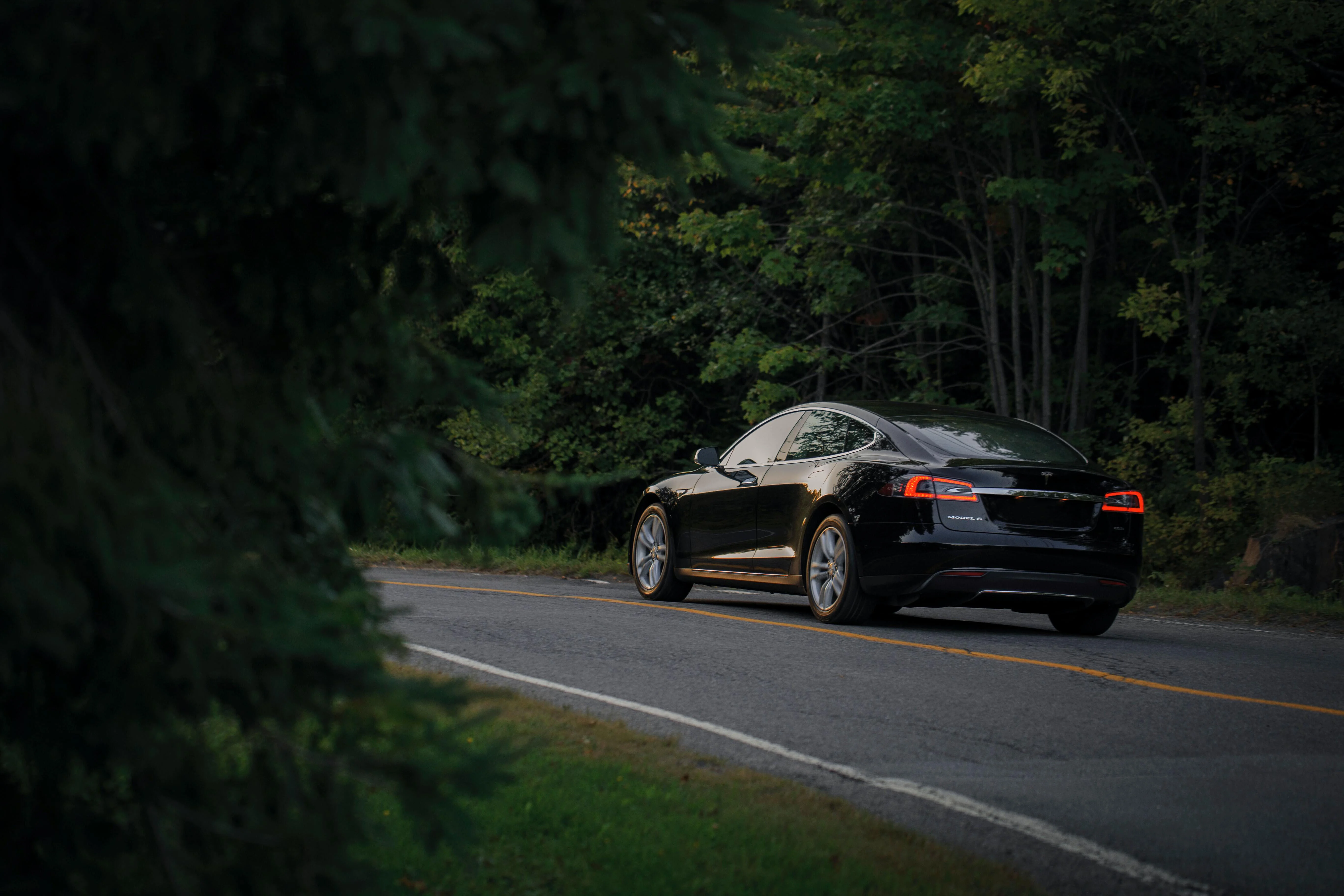
An improved user experience
The package includes provisions to improve price transparency, compatibility labeling, data sharing, and payment options, making EV driving more convenient for consumers.
Smarter Charging
Every publicly accessible charger in the EU will be required to be digitally connected and smart charging capable, contributing to a more efficient and consumer-friendly experience.
In conclusion, more and more drivers across Europe will embrace electric mobility in the coming years. Thanks to government prioritization and a shared vision for a sustainable future, the Fit for 55 Package is a necessary step toward achieving the EU’s ambitious goals. It’s a key milestone in turning those goals into reality.
Automatic Laser Welding Equipment
Automatic Laser Welding Equipment,Laser Platform Welding Machine Equipment,Laser Beam Welding Machine,Automatic Sheet Welding Equipment
Herolaser , https://www.herolasermachine.com